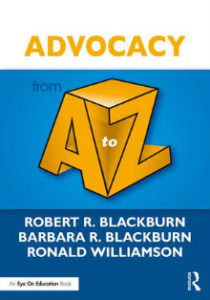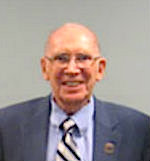Communicate Effectively with Your School Board
By Barbara Blackburn, Robert Blackburn, and Ron Williamson
Communication is central to your role as an advocate. If you can’t communicate effectively, your message will never be heard. Of particular importance is the ability of school and teacher leaders to communicate with the school board to advocate for an issue.
Nine Principles of Effective Communication
Conciseness and consistency matter
Open with your key point
Match to your agenda
Make it coherent
Understand your audience
Name your objective/desired action
Courtesy rules
Ask questions
Tell a story
► Conciseness and consistency matter
It’s important to have a concise message. Oftentimes your listeners are busy, and they do not have a tremendous amount of time to give you. If you take too much time, they will either move on or tune out. Additionally, be consistent in your message. If you send unclear messages that are not consistent, you will confuse your audience.
► Open with your key point
We live in a busy world and your audience will be busy. Start your verbal or written message with your key point. When you are advocating an issue, begin with the most important thing you have to say. This way, if your listener does interrupt you, you will still have communicated your main point.
► Match to your agenda
Next, be sure your message matches your agenda. You may be thinking this is common sense, but you might be surprised how often this does not occur. For example, we heard one principal discuss safety. Her goal was to convince the Superintendent and Cabinet to improve lighting in the parking lot and around the exterior of the building. She created a one page fact sheet, but she never stated that as her goal. Instead, she simply shared information about the importance of school safety without focusing on her agenda. The decision-makers were left with information, but without a clear idea of what the principal wanted.
► Make it coherent
Similarly, you want to have a coherent message. If you stray off topic, you will lose your audience. Unfortunately, it’s too easy to do this. A lack of focus can undermine your advocacy efforts.
► Understand your audience
As you craft your message, you’ll want to understand your audience. As you interact with different stakeholders, you will find that each person has different needs, goals, and prior experiences related to your agenda. Once you discover where they are coming from, you can tailor your message to them, and your chances of being effective are improved.
► Name your objective/desired action
As you are delivering your message, be sure to ask for help with your objective, or ask for a specific action. If we only present material, the stakeholder is left with information but no idea what they’re being asked to do. That’s nice, but what do you want them to do with that information? Notice in the example below that the teachers were very clear on the action they wanted the school board to take.
► Courtesy rules
As you communicate with stakeholders and influencers, courtesy should be at the forefront. We don’t always see courtesy used in the advocacy process, but if you want to accomplish your goals, you will make more progress if you are considerate. This includes our words, but also our non-verbal communication.

► Ask questions
Another important concept is to ask questions while you are delivering your message. People are more responsive when you talk with them, not at them. Part of effectively asking questions is listening. You should listen just as much as you talk. Asking questions is one way to have a conversation, rather than simply stating information. The use of open-ended inquiry questions promotes dialogue.
► Tell a story
Finally, as you are sharing information, tell a story that supports your ideas. Stories are personal, and people remember stories longer than they remember facts. If possible, you want to tell a first-hand account of a story, something that you experienced. However, secondhand stories can also be effective. Perhaps you can explain a personal experience someone else shared with you, such as how this issue will impact a child in your school. The point is stories are effective, particularly if they tug at the heartstrings.
A Board Presentation That Delivers
Let’s look at a sample presentation for a school board by a district-wide teacher leadership team advocating to school board to provide early release time for collaboration and planning (given 5 minutes on the agenda).
As you know, in our continued efforts to improve student achievement, we have recently focused on increasing our use of evidence-based teaching strategies, identified by John Hattie.
Although we are making progress, we find that teachers need concentrated time to work together. We are asking that, for the next school year, the district consider building four early release days into the calendars. Students would be dismissed after lunch, which would allow teachers to have 2-3 hours of collaboration.
Based on a survey of teachers and interviews with school administrators, we have identified three specific tasks that would occur during the early-release planning time. These are listed in your handout (specific examples provided by teachers in presentation). Each school has also used surveys, focus groups, and interviews to gather parents’ perspectives on the plan.
As you can see from the survey results, 73% of parents support the early release time as long as they are given ample notice of the dates and that we communicate how teachers are working together to improve student learning.
The biggest concern of parents is the need for a plan in case a parent cannot pick their child up early. The principals agreed they would use teacher assistants and other personnel to provide supervision and activities during the time if parents are unable to pick up their children.
We ask that you consider our request. Thank you for your time.
Specific Tips for Communicating with Your School Board
In addition to effective communication, there are specific strategies to communicate with your school board.
♦ Identify a parent or community spokesperson to help deliver your message to the board.
♦ Frame the importance of your issue in your opening statement. Link it to board goals and how students will be successful once they leave your school.

♦ Share examples of your work to illustrate the impact. It can be very helpful to highlight the effect of greater rigor on one or more students.
♦ Give recognition to the individuals who have contributed to your success. It is a time for you to be modest and allow others to be recognized.
♦ Conclude your presentation by aligning your vision with the board’s vision for the district.
When communicating with your school board to advocate for an issue, it’s important to clearly frame your message. You’ll also want to use a variety of strategies during the presentation, such as asking other stakeholders to participate in the presentation.
__________________________________________________








































